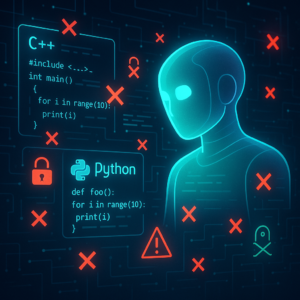Beyond Accuracy: Evaluating AI Models’ Confidence on the Road to Artificial General Intelligence

Beyond Accuracy: Evaluating AI Models’ Confidence on the Road to Artificial General Intelligence
Welcome to the fascinating world of artificial intelligence, where machines are quickly developing cognitive skills that once belonged exclusively to humans. Imagine teaching an AI to not only answer questions but to recognize when it doesn’t know the answer. Sounds like science fiction? Well, it’s not—it’s part of an ambitious study aiming to bridge the gap between current AI capabilities and the elusive goal of Artificial General Intelligence (AGI).
The Challenge with Static Benchmarks
For many years, AI advancements have relied on static benchmarks like the Turing Test, which look to assess a model’s skill set by testing it on predetermined questions. But here’s the rub: once a model memorizes these questions, we’re no longer testing its intelligence; we’re testing its memory. This is a bit like giving your friend the same puzzle every month and assuming they’re becoming a puzzle master because they solve it quickly—when they’re just recalling the solution.
To combat this, scientists like Norbert Tihanyi and team have rolled out a new methodology called Dynamic Intelligence Assessment (DIA). But what is it, and how is it set to redefine AI benchmarks?
Introducing the Dynamic Intelligence Assessment (DIA)
Think of DIA as the AI version of a dynamic escape room, where the puzzles change every time you enter the room. Instead of static questions, DIA uses dynamic question templates. This setup presents problems differently each time, forcing AI models to truly solve them rather than just recall past answers. This adds layers of complexity that better assess a model’s reasoning capacities.
A Treasure Trove of Tasks: The DIA-Bench Dataset
Utilizing the DIA approach, the research team introduced the DIA-Bench dataset. What’s impressive is its variety—150 different task templates range from basic math to complex cybersecurity puzzles and cryptography, with each task showing up in multiple formats like text, PDFs, and even coded binaries.
New Metrics in Town
Ever wondered if your AI bot confidently walks into a wall, thinking it’s a door? The researchers here aren’t just interested in whether a model can solve a problem—they want to know how confidently and reliably it makes those attempts. This is where four novel metrics steal the show:
-
Reliability Score: This is like a report card that says, “Yes, you did it—or no, you really, really didn’t.”
-
Task Success Rate: How often does the AI nail the challenge consistently? This metric tracks success across different variations of the same problem.
-
Confidence Index: Think of this as the AI’s inner voice, checking if it’s sure about its answers across different queries.
-
Near Miss Score: Sometimes you almost win! This metric looks at how often the AI almost, but doesn’t quite, get the problem right.
Tools vs. No Tools: The AI Performance Showdown
One of the critical findings from this research is the distinction between models that can use tools and those that can’t. Consider ChatGPT-4o, an AI that wields Python code, accesses the internet, and navigates Linux commands. This, compared to its counterpart, GPT-4o, which strides in sans tools.
Surprisingly, it’s not just about having the tools—a revelation emerged when both models approached complex mathematical challenges. While ChatGPT-4o successfully performs tasks utilizing its tools, GPT-4o blunders on simpler math tasks, illustrating a pronounced gap in capabilities and confidence between tool-using AI and their limited counterparts.
What’s Your AI Confidence Level?
Why does this matter to you, our tech-savvy reader? Well, imagine using AI in critical areas like cybersecurity or running autonomous systems. Here, mistakes can be costly. Understanding a model’s confidence level—whether it’s bluffing its way through or genuinely solving a problem—is invaluable.
For instance, if you’re an AI practitioner, knowing that an AI can self-assess its capabilities could help you better flag model outputs in critical applications, potentially averting damage from overconfidence (or “hallucinations”) in AI-generated solutions.
Key Takeaways
- Dynamic Intelligence Assessment focuses on evaluating AI using constantly changing questions, making it harder for models to rely solely on memory.
- The DIA-Bench dataset challenges AI across multiple disciplines, in multiple formats, creating a strenuous test for AI confidence and reliability.
- New metrics, like Reliability Score and Confidence Index, offer nuanced insights into how AIs tackle problems, blurring the line between a confident guess and a reliable answer.
- Tool-using models demonstrated superior problem-solving abilities compared to models without tool access, highlighting the potential leap towards AGI when tools are leveraged effectively.
This research pushes the boundary of AI development, creating a more nuanced evaluation landscape. It’s a thrilling time for AI, and as models continue to evolve, frameworks like DIA will be essential in steering technological marvels towards truly adaptive and intelligent systems.
For those riding the wave of AI advancement—from developers to enthusiasts—this study beckons you to consider not just what your AI knows, but how it knows it. So, what’s your next AI breakthrough going to look like?
Remember to check out DIA-Bench if you want a closer look at these trials. You can find it here.
If you are looking to improve your prompting skills and haven’t already, check out our free Advanced Prompt Engineering course.
This blog post is based on the research article “Dynamic Intelligence Assessment: Benchmarking LLMs on the Road to AGI with a Focus on Model Confidence” by Authors: Norbert Tihanyi, Tamas Bisztray, Richard A. Dubniczky, Rebeka Toth, Bertalan Borsos, Bilel Cherif, Mohamed Amine Ferrag, Lajos Muzsai, Ridhi Jain, Ryan Marinelli, Lucas C. Cordeiro, Merouane Debbah. You can find the original article here.




